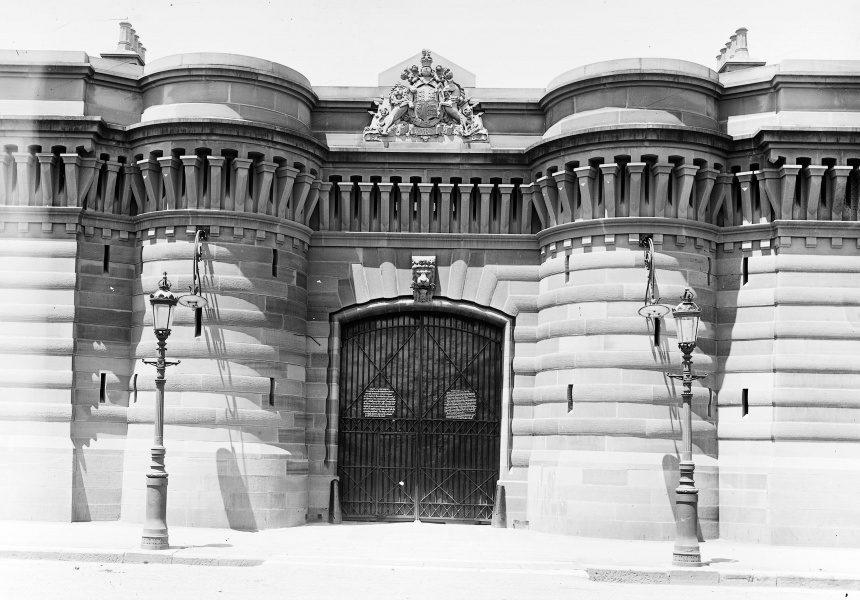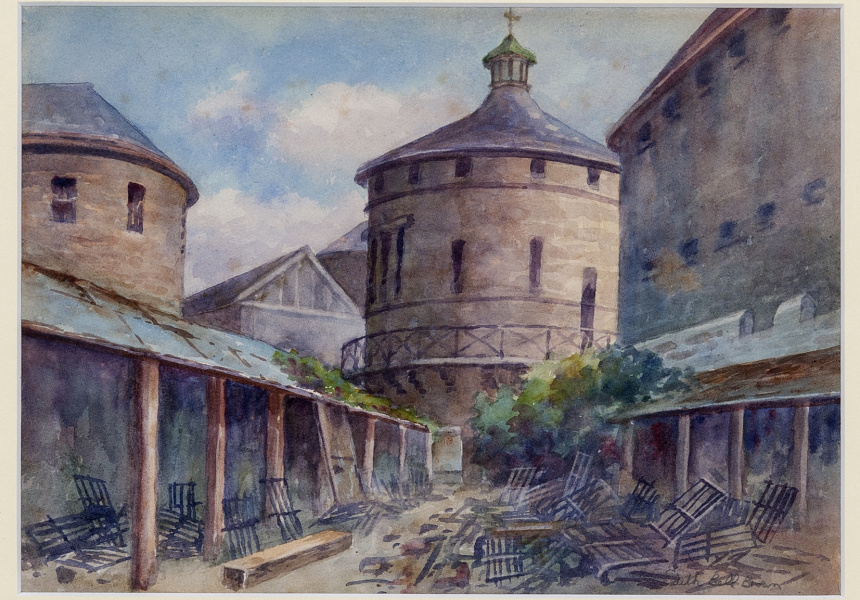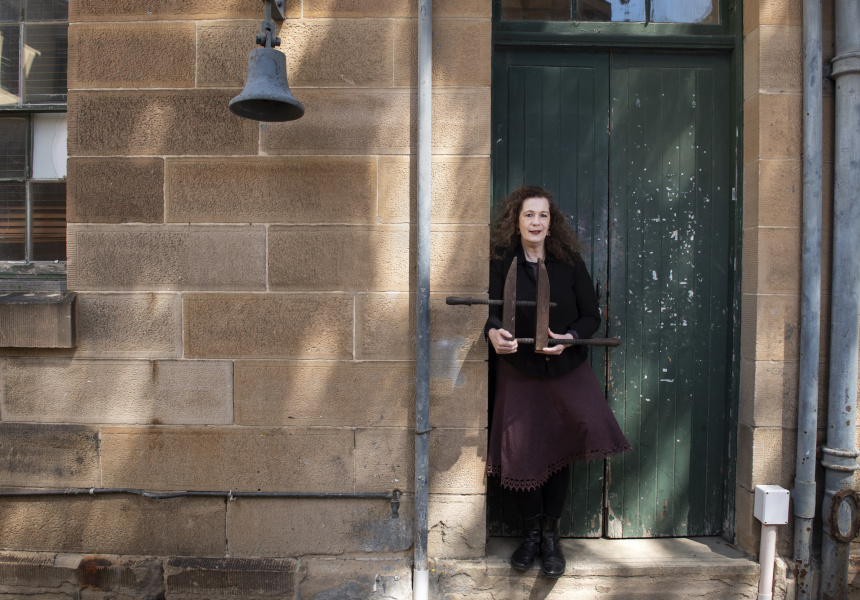There are plenty of students at the National Art School (NAS) in Darlinghurst who recount seeing or hearing ghosts on campus after dark. It isn’t surprising when you consider the site’s history: for 73 years it was Darlinghurst Gaol, housing thousands and thousands of Sydney’s most notorious criminals, male and female, 76 of whom were hanged.
“I’m not a believer in ghosts, but it’s a spooky place if you go there at night,” NAS archivist, collections manager and lecturer Deborah Beck tells Broadsheet. “The bats fly over, you think about the prisoners who were there, it’s very dark and it certainly has an atmosphere.”
Since 1922 it has been art students, not inmates, who have wandered the evocative, historic sandstone campus. A new exhibition, Captivate: The National Art School and Darlinghurst Gaol, explores the site’s rich history – from its decades as a place of corporal punishment, to its transformation over the past century into the prestigious art school that gave us artists including Margaret Olley, Robert Klippel, Tony Tuckson, Fiona Hall and Joan Ross, and boasted teachers such as William Dobell.
Stay in the know with our free newsletter. The latest restaurants, must-see exhibitions, style trends, travel spots and more – curated by those who know.
SIGN UPFeaturing original paintings, drawings, photographs and films alongside original items from the gaol, the exhibition will be presented across the spacious, heritage-listed site, and has been largely co-curated by Beck and Katrina Cashman.
Its history is really a story of two halves. Darlinghurst Gaol opened in 1841, and for many years was Sydney’s only gaol. “The population ranged from vagrants to murderers, bushrangers and rapists. Seventy-six people were hanged and there was lots of corporal punishment, including floggings and solitary confinement,” says Beck.
Not all the prisoners were society’s most dangerous. Bulletin magazine co-founder JF Archibald (who established the Archibald Prize) served time for refusing to pay a fine. And between 1905 and 1909 poet Henry Lawson was a regular – an alcoholic, he rarely managed to pay his wife’s alimony – although he did compose seven poems while imprisoned.
Fittingly, many early prisoners were artists, too – from the so-called Demon Dentist of Wynyard Square, Henry Louis Bertrand, who was convicted of murdering his lover’s husband, to bushranger Captain Starlight. Bertrand served 28 years and painted a beautiful watercolour of the site in 1891, believed to be the first painting of the gaol.
That painting has been loaned to the NAS and will be included in the exhibition, along with a number of other works by Bertrand. A highlight of the exhibition is former gaol governor John Cecil Read’s scrapbook, containing 60 original artworks made by the prisoners during his tenure, from 1861 to 1889.
“It’s been in his family nearly 140 years and this is the first time it’s ever been seen since, so that’s pretty special,” Beck says.
Many of the items on display are a reminder of the gaol’s brutal past, including the nooses and hoods used for hangings, the original camera used to photograph prisoners, and height-measuring and fingerprinting equipment.
These items and a wall of 40 photographs of inmates including bushrangers Captain Starlight and Captain Moonlite, and Louisa Collins – the last woman hanged in NSW – will be on display downstairs in the main gallery.
The upstairs gallery tells a different story altogether, with highlights from a century of artistic triumph since NAS moved to the former gaol in 1922. (The school’s history stretches back to 1843, when it opened on Pitt Street as part of the Sydney Mechanics’ School of Arts.)
Paintings, photographs and posters made by students publicising balls and protest marches (including the first poster made by pop artist Martin Sharp) will be on display, as well as an exhibition of 120 drawings from the past century by the likes of Brett Whiteley and Godfrey Miller.
It is a history worth celebrating, and one that has been hard fought.
“There have been a lot of things to protest against,” says Beck. “From our first major march on Parliament House when we were threatened with being kicked off the site in 1974, to the repeated possibility of being amalgamated with universities, even threatening to close us down. But we don’t have to fight anymore – we’ve now got a 45-year lease and great support from the government and arts minister Ben Franklin.”
Much of this history is relayed in Captivate – a book edited and largely written by Beck, with additional chapters from journalist Jacqui Taffel and NAS board member Jennifer Byrne – which includes everything from prison escapes to NAS’s protest history.
“It’s been a very strange place in one regard,” says Beck. “There were thousands of prisoners but also thousands of art students. So the place has had this constant stream of people, from the absolutely dejected to people having a wonderful time learning about art.”
Captivate: 200 years of Darlinghurst Gaol and the National Art School will run at NAS September 23 to October 30. Entry is free.



